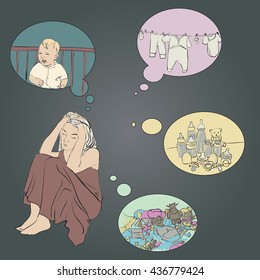Postpartum depression is the most common complication of childbearing. For information on the validity of these screening tools, visit our Scientific Research page. What does your household use for drinking water?
Other tools, like the Hamilton Depression Rating Scale and the Beck Depression Inventory, have not been validated in pregnant and postpartum populations. Studies of postpartum depression screening demonstrate that it is feasible in outpatient clinical settings, either during mothers’ postpartum visits or during infants’ well-child visits, – with the use of screens such as the Edinburgh Postnatal Depression Scale – or the 2-item Patient Health Questionnaire (PHQ-2). During the pregnancy, each woman received a Prenatal Questionnaire , and a subsample of 5of these women received the Diet History Questionnaire in the mail.
The maximum score is 30. Bonding is an unsatisfactory term, but is widely used and less cumbersome than motherinfant relationship. How to care for yourself postpartum? What are the signs of postpartum anxiety?

What to know about peripartum or postpartum depression? Of these, women were not eligible because their baby was born more than months previously. Complete an interactive quiz and share the with your health care provider. Note: Since the questionnaire relies on patient self-report, all responses should be verified by the clinician, and a definitive diagnosis is made on clinical grounds taking into account how well the patient understood the questionnaire , as well as other relevant information from the patient.
If you think you might want one, the Belly Bandit or other similar belt can help keep things in place as your belly shrinks back to size. This can help ease aches and pains in your breasts. This is a validation of a self-rating questionnaire designed to detect disorders of the mother-infant relationship. Edition of the Birmingham Interview for Maternal Mental Health.
Several studies suggest that postpartum anxiety is relatively common among postpartum women and may even be more common than depression. Emerging evidence also suggests that a large number of postpartum women who do not meet diagnostic criteria for a specific anxiety disorder yet experience a clinically significant anxiety symptoms which are distinct from anxiety experienced at other times of. We ask everyone these questions.
If you have questions or concerns, we will come back and address them. Find in-depth information on postpartum depression including causes, symptoms, diagnosis, and. Does that work for you? ABSTRACT: Perinatal depression, which includes major and minor depressive episodes that occur during pregnancy or in the first months after delivery, is one of the most common medical complications during pregnancy and the postpartum perio affecting one in seven women.

Screening for Perinatal Depression. In principal component factor analysis, items were loaded indicating a 7-factor solution for the questionnaire. Below is a helpful quiz you can take to tell if you may be at risk for developing postpartum depression. Fill out a health questionnaire and receive clearance within hours to start the program 3. T- Measures of maternal adaptation. To optimize the health of women and infants, postpartum care should become an ongoing process, rather than a single encounter, with services and support tailored to each woman’s individual needs.
You can learn more in our section on difficult symptoms during pregnancy and postpartum. Taking a postpartum depression test is a great first step. Recognizing postpartum depression is key.

PPD isn’t all about the postpartum period. Expert opinions vary as to when PPD begins.
No comments:
Post a Comment
Note: Only a member of this blog may post a comment.